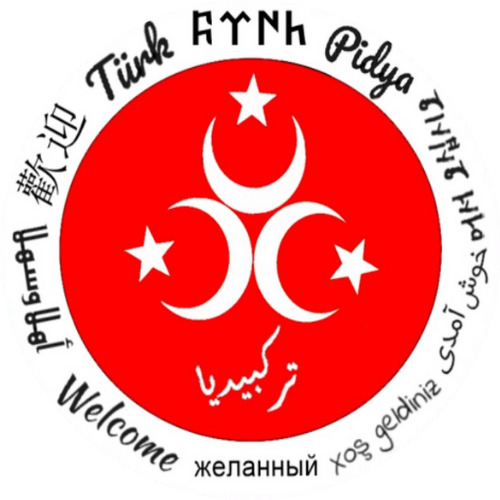Sultan Abdülmecid I: The Tanzimat Reformer & The Mind Behind Dolmabahçe
Table of Contents
Sultan Abdülmecid I is recorded in Ottoman history not merely as a ruler, but as the Great Modernizer. His reign (1839-1861) triggered the dawn of the modern era in Turkey. He initiated the sweeping Tanzimat Reforms, culturally pivoted the empire toward the West, and left behind a monumental legacy in the form of the Dolmabahçe Palace. However, his era was also defined by existential frictionfrom the conflict over Egypt to the financially draining Crimean War.

Lineage and Family
Abdülmecid was born on April 25, 1823, in Constantinople (modern day Istanbul). He was the son of the reformist Sultan Mahmud II and his consort Bezmiâlem Valide Sultan. His upbringing was revolutionary for an Ottoman prince: he received a Western style education and was the first Sultan to speak fluent French, the diplomatic language of the era.
His harem and family were extensive. Among his most significant consorts (Kadın Efendi) were:
- Servetseza Kadın (Chief Consort/Başkadin)
- Şevkefza Kadın (Mother of Sultan Murad V)
- Tirimüjgan Kadın (Mother of Sultan Abdülhamid II)
- Gülcemal Kadın (Mother of Sultan Mehmed V Reşad)
- Gülistu Kadın (Mother of Sultan Mehmed VI Vahideddin)
- Rahime Perestu Kadın (Adoptive mother of Abdülhamid II and later Valide Sultan)
Ascension in Turbulent Times
When Abdülmecid ascended the throne on July 2, 1839—shortly after his father’s deathhe was only 16 years old. The empire was in a state of existential crisis: the Ottoman army had just lost the Battle of Nizip against the Egyptian governor Muhammad Ali Pasha, and Admiral Ahmed Fevzi Pasha had surrendered the entire fleet to the Egyptians.
Only the intervention of European powers (Great Britain, Russia, Austria, and Prussia) prevented total collapse. The Convention of London (1840) secured peace: Muhammad Ali was granted hereditary governorship of Egypt but had to return Syria, Crete, and the Ottoman fleet. This episode underscored just how heavily the empire’s survival relied on European diplomacy.

The Legend of Aid to Ireland (1847)
One of the most fascinating human chapters of his reign is the Ottoman aid sent during the Great Famine in Ireland. It is historically verified that Sultan Abdülmecid donated £1,000 Sterling (a significant sum at the time). A letter of gratitude from Irish notables to the Sultan is still preserved in the Ottoman archives today.
However, a persistent story endures that the Sultan originally intended to donate £10,000 but was diplomatically blocked by the British to avoid embarrassing Queen Victoria, who had only donated £2,000. Additionally, the tale of three Ottoman ships secretly unloading food at the port of Drogheda despite a British blockade remains a core part of local Irish folkloreeven though official shipping registers from the time lack concrete evidence. What is fact, however, is the bond: the coat of arms of Drogheda features a Star and Crescent. While this symbol existed centuries before the famine, modern residents often proudly interpret it as a symbol of this historical friendship.

The Era of Tanzimat Reforms
Abdülmecid’s most significant political legacy was the consistent modernization of the state. With the Edict of Gülhane (November 3, 1839) and the later Imperial Reform Edict (1856), he guaranteed all subjectsregardless of religionprotection of life, honor, and property.
His key reforms included:
- Finance: Introduction of the first Ottoman banknotes (Kaime) in 1840. The modernization of the financial system laid the groundwork for today’s economic structure, a landscape that foreign investors still navigate when starting a company in Turkey.
- Symbols: Standardization of the Turkish flag (Star and Crescent on a red background) in 1844 and the introduction of a national anthem (Mecidiye Marşı).
- Military: Introduction of conscription (1843/44) to replace arbitrary levies.
- Law & Administration: Establishment of modern courts modeled after the French system and the creation of a centralized bureaucracy. This restructuring of the state’s administrative divisions is the ancestor of the modern Turkish address format and neighborhood (Mahalle) systems we use today.
- Education: Founding of a Ministry of Education (1857) and planning for the first university (Darülfünun).
- Human Rights: Prohibition of the slave trade (closing of the Istanbul slave market in 1847), although slavery as an institution was not yet fully abolished.
The Crimean War and the Debt Trap
The Crimean War (1853-1856), in which the Ottoman Empire fought alongside Britain and France against Russia, brought military victory and the neutralization of the Black Sea (Treaty of Paris, 1856), but it came at a devastating price. To finance the war, the Sultan had to take out the first foreign loans in 1854. This marked the beginning of a spiral of debt that would drive the empire into financial dependence on Europe for decades to come.

Dolmabahçe Palace: Opulence on the Bosphorus
Sultan Abdülmecid was determined to prove that the Ottoman Empire was a modern European state. To demonstrate this, he abandoned the traditional Topkapı Palace and constructed the Dolmabahçe Palace between 1843 and 1856. The construction consumed immense sums: the cost totaled five million Ottoman gold liras, equating to roughly 35 tons of gold.
Based on current gold prices (December 2025 status), this gold value would correspond to an astronomical sum of over $3 billion USD today. Reports suggest that up to 14 tons of gold leaf were used for the ceiling decorations alone. For those visiting Istanbul, viewing this facade from the water is a highlight; while the Sultan had his imperial caiques, modern visitors often admire the palace while exploring Turkey’s maritime heritage along the Bosphorus.

The interior design was equally world-class. Massive crystal chandeliers and exquisite textiles adorned the halls. The attention to detail in the ceramics and tiles rivals even the work of the top Turkish tile manufacturers operating in the region today, showcasing the masterful craftsmanship of that era.
Death and Succession
Sultan Abdülmecid I passed away on June 25, 1861, at the young age of 38 from tuberculosisthe same ailment that had claimed other members of his family. He was laid to rest near the Yavuz Selim Mosque in Istanbul. He was succeeded by his half brother, Sultan Abdülaziz, who initially continued the policy of reform but also inherited the crushing burden of debt.







